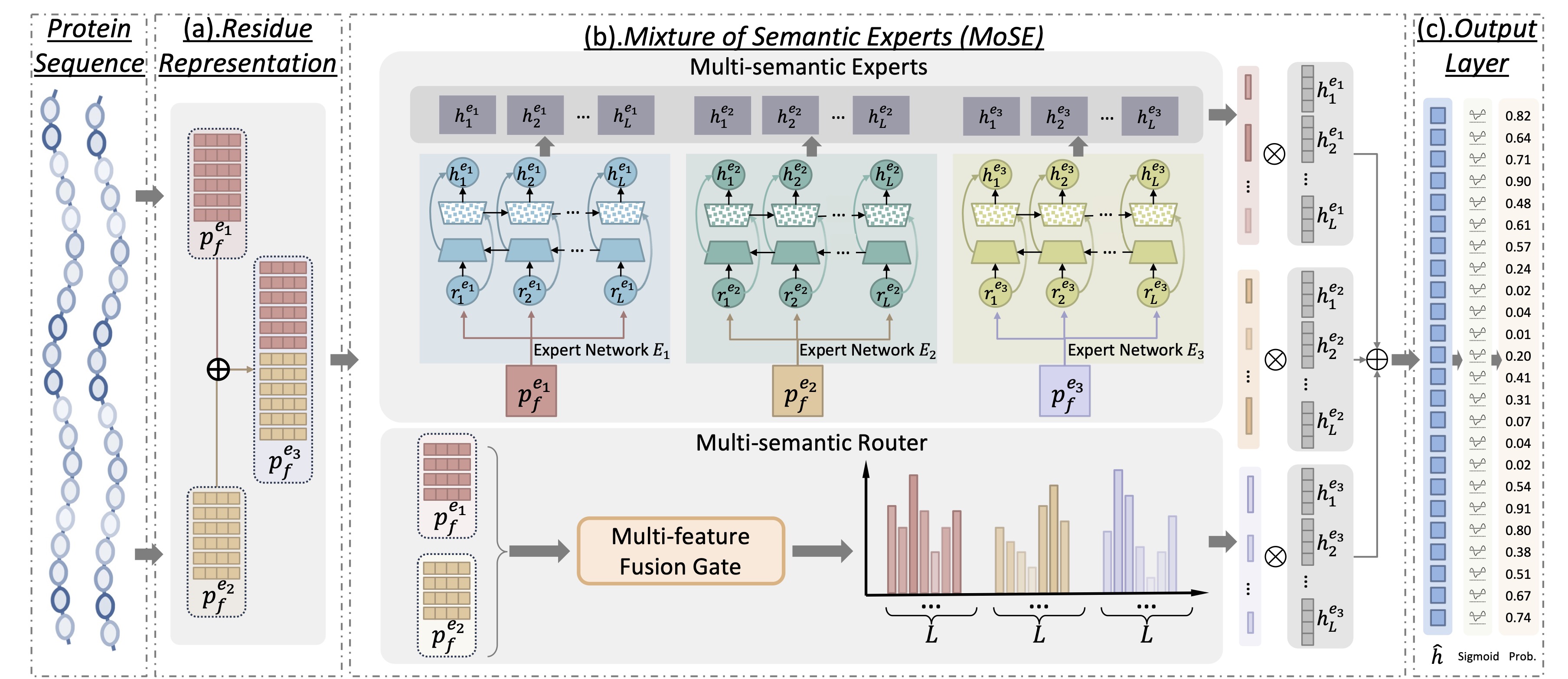About MoSE
Intrinsically disordered regions (IDRs) are pervasive in proteins and play pivotal roles in diverse biological processes. Their accurate identification is essential for elucidating protein structure–function relationships but remains challenging due to their inherent flexibility. Recent advances in protein feature extraction and protein language models have opened new avenues for identifying disorder from a semantic perspective. Residue-level representations are critical for constructing reliable predictors; however, existing methods often overlook the inconsistencies introduced by heterogeneous feature extraction strategies, which may yield divergent semantic interpretations for the same residues. Consequently, capturing the dynamic interplay between residues and their contextual variations remains a central and unresolved challenge in computational biology. We present MoSE (Mixture of Semantic Experts), a framework that adaptively models protein sequence semantics through context-aware cues to enhance IDR prediction. MoSE leverages the Mixture-of-Experts paradigm to integrate complementary semantic variations derived from position-specific scoring matrix (PSSM) profiles, general protein language models, and disorder-specific language models. It comprises two components: Multi-Semantic Experts, which learn diverse representations while preserving local contextual information, and a Multi-Semantic Router, which employs feature-fusion gating to activate the most relevant expert for each residue in a context-sensitive manner.

Overview of the MoSE framework. (a) Residue Feature Extraction Module: this stage involves generating residue-level feature vectors using diverse extraction strategies (e.g., PSSM, ESM-2, DR-BERT, etc.). These features serve as inputs to different expert networks in the subsequent module. (b) Mixture of Semantic Experts Module: this component consists of two submodules. The first is the Multi-Semantic Experts, where different semantic expert networks encode residue-level representations derived from various feature types. The second is the Multi-Semantic Router, which is guided by a multi-feature fusion gate to determine which expert should be activated at each residue position, thereby automatically selecting the most contextually relevant semantic information. (c) Output Layer: the final output layer is utilized to perform residue-level identification of IDRs.